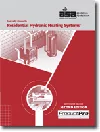Residential Contractors Work Through The Housing Bust
In other housing news, credit worries over subprime mortgages are contributing to a wait-and-see attitude among prospective home buyers and reducing builder confidence in the single-family housing market, according to the latest National Association of Home Builders/Wells Fargo Housing Market Index. The index declined two points to 22 in August, its lowest level since January 1991. Any number over 50 indicates that more builders view sales conditions as good than poor.
As bad as the national figures sound, at least the averages smooth over the larger regional drops. Greg Kozan, president, Ridgeway Plumbing, Boynton Beach, Fla., says single-family housing starts in southeast Florida are nearly 80 percent off the peaks reached just two years ago.
“All of the major home builders have been aggressively re-negotiating and re-bidding existing communities in order to trim costs,” Kozan told us. “It seems you’re only as good as your last lowest price.”
Kozan said his company’s focus has always been to do all it can to maintain current projects and relationships, but “margins are bound to suffer.” Multifamily starts are actually up and Kozan says his crews are busy with that type of construction as well as commercial work.
“On the positive side, a slowdown is the best time to increase market share,” he added, “and we’ve been very successful in that regard. It’s extremely important that we stay well-positioned for when the inevitable turnaround comes. In our market, however, that could be another year away.”
Suffering now to gain later is also what we heard from Chris McGinnis, Tucson Plumbing, Tucson, Ariz.
“Our approach to this downturn is to tighten up and be willing to diversify within reason,” he explained. “But mostly to use the time to re-evaluate all aspects of our operation and implement necessary changes.”
McGinnis says his local residential construction market is off 45 percent, and expects a downward trend for the rest of the year. “I don’t believe we’ll see our 2004-2006 volume levels again until 2010.”
While McGinnis is disappointed to see most builders attack subcontractor costs before addressing their own inefficiencies, he does think that all the players needed - some even welcomed - relief from the unprecedented run-up during the past five years.
“The more intelligent approach by some builders has been to form teams based on honored relationships that collectively address the market.”
Looking for a reprint of this article?
From high-res PDFs to custom plaques, order your copy today!









